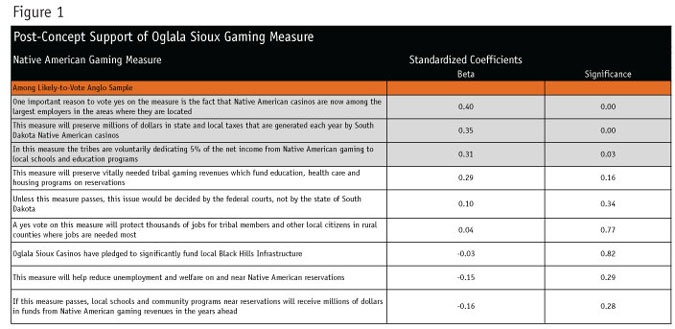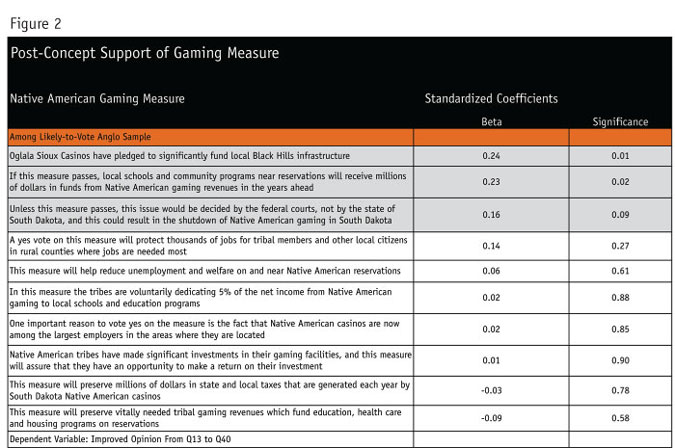Editor's note: Michael Lieberman is founder and president of Multivariate Solutions, a New York research consulting firm.
Whenever presidential candidates give a campaign speech they are speaking to two different audiences: those who will vote for them and those who may or may not. These groups need different messages. Ardent supporters need reassurance, confirmation and an incitement to donate or become otherwise active. These messages often follow party lines. However, the voters on the fence have heard these platforms; they need something different, something that sways.
And from my experience working in political surveys, I can say that oftentimes the issues that will incite one group are not the same issues that will sway the other. Most elections, referendums or voter measures have two sets of drivers.
The first driving issue is what we’ll call the base. This is the underlying sales pitch of a campaign: what a candidate stands for, what a new referendum will accomplish or the basic reasoning behind a measure. The second driver consists of those attributes which may sway voters one way or the other. These are the issues that may move a voter who is very unlikely to vote for the measure to neutral, or a likely voter to the “very likely” column.
This article illustrates a commonly used survey structure that can identify both types of drivers. The poll we employ is no longer than a standard survey (in the field, time is money). Yet by strategically placing questions, we can uncover both the base and the sway – double the information – within the questionnaire length.
Drivers behind a referendum
But before we can explain the solution, we first need to understand the problem. In this fictional example, our firm was contacted to identify the drivers behind a referendum to legalize gaming on the Oglala Sioux reservation in Pennington County, S.D.
The Oglala Sioux reservation is not far from both the Black Hills, which includes tourist attractions such as Mount Rushmore, and the Rapid City metro area. Rapid City is the second largest city in South Dakota. Of Rapid City’s 70,000 residents, about 75 percent are classified as “white alone” – we’ll refer to this population as Anglo. Rapid City has a low percentage of traditional minority groups, such as blacks, Hispanics or Asians. Instead, Rapid City’s largest minority group is Native American.
In order to relieve a unemployment rate and other chronic social ills, the Oglala Sioux propose to open a gaming facility.
An earlier poll indicated these specific reasons for opposing the new gaming permit:
- This measure will lead to an increase in gambling addictions, bankruptcies and other social problems.
- Passage of this measure could lead to major expansion of gambling in the state.
This earlier poll showed a systemic, if subtle, prejudice in the Anglo community against the Oglala Sioux and a clear suspicion that gaming will bring the “wrong element” to the Black Hills and Rapid City. Native Americans, whether Oglala Sioux or other tribes such as mainstream Sioux and Dakota, who would be inclined to support the referendum, make up just 10 percent of registered voters. Therefore, for this referendum to pass, a large number of voters needed to be swayed.
And as the saying goes, if you don’t like what people saying, change the conversation. Our firm was contracted to find out what to talk about. The Oglala Sioux council and their public relations team wanted to know why voters either supported or opposed the measure and which facets of the referendum they should stress in order to sway voters.
Given that approval of the gaming measure among the Native American population will be virtually unanimous, our survey was conducted among likely Anglo voters. These respondents were asked early in our survey how likely they were to vote for this gaming measure. We refer to this as pre-concept.
Next respondents are run through a series of positive statements regarding the Oglala Sioux gaming initiative and asked, on a 1-to-5 scale, how much they agreed with each statement. Such statements include:
- One important reason to vote yes on the measure is the fact that Native American casinos are now among the largest employers in the areas where they are located.
- In this measure, the tribes are voluntarily dedicating 5 percent of the net income from Native American gaming to local schools and education programs.
Immediately after the array of statements, the survey again asks how likely they are to vote for this gaming measure. This is named post-concept.
Given the structure of the survey, when we pool the results we will be able to see how important the different statements are pre- and post-concept. For example, perhaps people who strongly disagree with one statement, Statement A, have poor early opinions but people who agree with another statement, Statement B, tend to soften towards the issue at hand. Statement A would be a primary driver; Statement B has the potential to sway.
Predict an output
We discover these influences by using regression analysis. Essentially, regression analysis attempts to predict an output based on input and to determine which input variables were most critical to prediction. The outcome is called the dependent variable because it relies, or depends, to varying degrees on the input factors.
The outcome we are interested in is responses to the question “How likely are you to vote for this gaming measure?” Responses are measured on a five-point scale:
5 = very likely to vote for gaming measure
4 = likely to vote for gaming measure
3 = neither likely nor unlikely
2 = unlikely to vote for gaming measure
1 = very unlikely to vote for gaming measure
We will be using various statements as our input variables. After the regression is run, statements are sorted by their p-values (a measure of significance to the outcome). Those statements with a p-value of less than .10 (that is, are more than 90 percent likely to affect the voting score) are highlighted. These are the strategy key drivers.
Basis of support
The true basis of support for the gaming measure is found using post-concept regression. Why post-concept? This regression measures a voter’s position after reading positive attributes. This would be the position of voters after having received an attempt to sway them.
Figure 1 shows the post-concept regression. Examining the output, we see that three of the statements received significance scores below 0.10. Each of these statements relates to factors that are for the good of the wider population: employment, local schools and money in the South Dakota coffers. This gives us good reasons why voters support the measure.

Post-concept support is important but with this survey structure we can also see what will change voters’ minds in favor of the measure. That change could be from a “very unlikely” to “neither likely nor unlikely” or “likely to vote” to “very likely to vote.”
To measure change, we create a variable which, for the sake of simplicity, we’ll call improvement. Improvement is created simply by the steps below:
- improvement = post-concept - pre-concept
- if improvement is positive (1 or greater) we will set improvement = 1
- otherwise, if improvement is 0 or negative, we will set improvement = 0
In addition, all attributes are recoded to 1/0, with top scores 4 or 5 now simply coded as 1 while the lower scores 1, 2 and 3 are now all categorized as 0. We did this to better distinguish pro-voters. The results are shown in Figure 2.

By recasting the regression, another picture emerges. We can see our voters’ sentiments after they were exposed to the positive statements. And now, our improvement score is simplified: either 0 becomes 1 or else there was no improvement.
When we examine results of the improvement regression, we see, among Anglo voters, a general theme of “It’s good for us” and “We will not let federal courts decide” emerge as significant. These would be the statements most likely to sway voters or to show improvement.
Therefore, in order to successfully push the gaming initiative through, we recommended that the Oglala Sioux use a combination of both types of drivers: the issues that influence supporters and the issues that drive improvement.
Often, as was the case here, these two categories are not identical. For example, if an on-the-fence voter does not necessarily agree that enlarging state coffers with a new gaming facility is a good reason to permit one, hit him with “Well, would you rather leave this up to federal judges in Washington?” The chances of changing that voter’s mind, or at least coaxing him to reconsider support for the gaming initiative, will likely increase.
Increase support
When tracking a campaign – be it for a Native American casino initiative, a state senate seat or the race for the White House – it is critical that the strategic communication team understands how to increase support. Asking why voters take certain positions, and what moved them there, is essential.
Our technique assesses the potential of various statements. These messages can then be used in advertising or campaign speeches. While traditional techniques might evaluate the statements individually on a more stated- impact basis, our approach focuses on the actual impact of the statements. Identifying which statement has the greatest positive change – not necessarily which is the most-liked or well-received – is the key to improving support.
